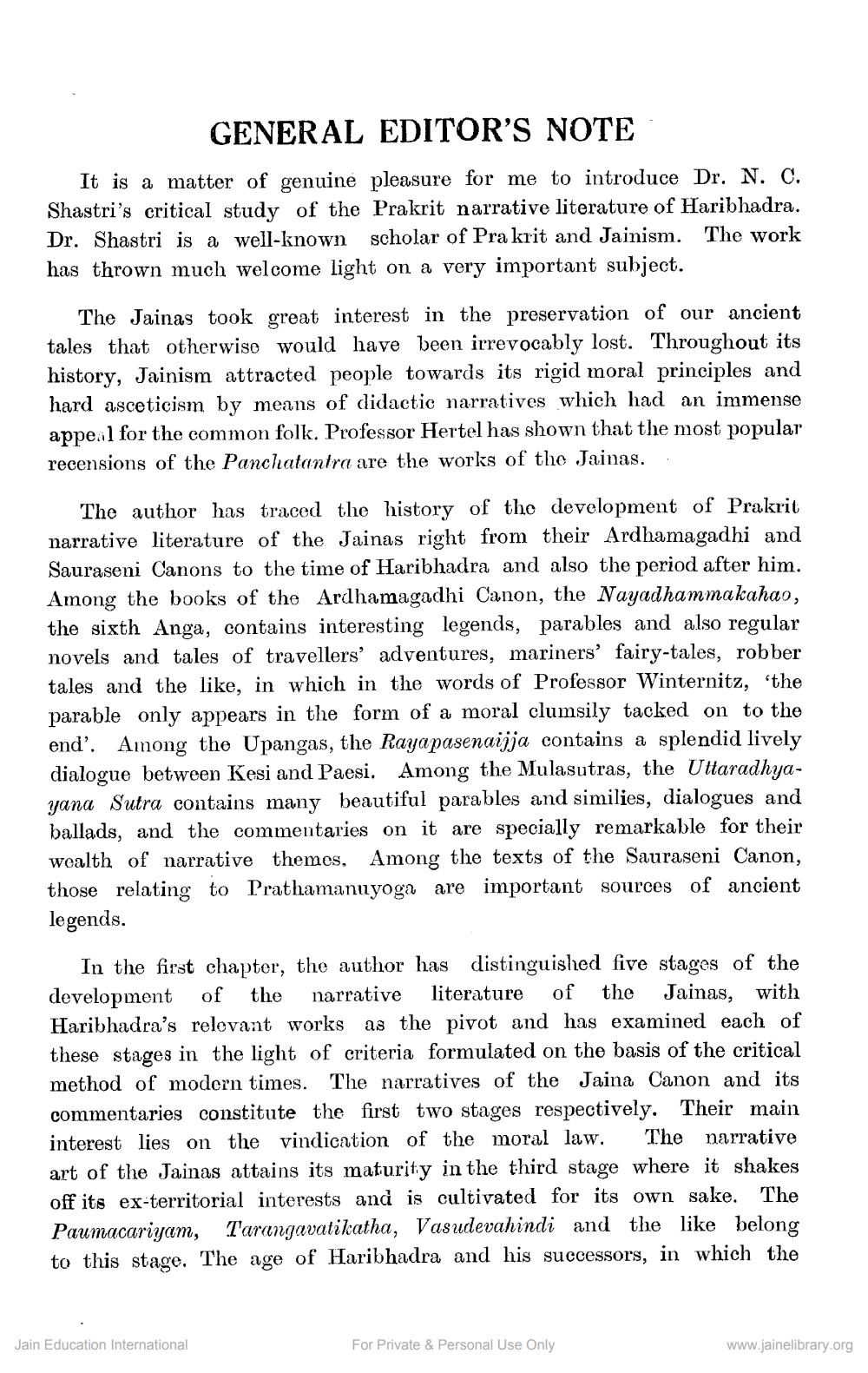________________
GENERAL EDITOR'S NOTE
It is a matter of genuine pleasure for me to introduce Dr. N. C. Shastri's critical study of the Prakrit narrative literature of Haribhadra. Dr. Shastri is a well-known scholar of Pra krit and Jainism. The work has thrown much welcome light on a very important subject.
The Jainas took great interest in the preservation of our ancient tales that otherwise would have been irrevocably lost. Throughout its history, Jainism attracted people towards its rigid moral principles and hard asceticism by means of didactic narratives which had an immense appeal for the common folk. Professor Hertel has shown that the most popular recensions of the Panchatantra are the works of the Jainas.
The author has traced the history of the development of Prakrit narrative literature of the Jainas right from their Ardhamagadhi and Sauraseni Canons to the time of Haribhadra and also the period after him. Among the books of the Ardhamagadhi Canon, the Nayadhammakahao, the sixth Anga, contains interesting legends, parables and also regular novels and tales of travellers' adventures, mariners' fairy-tales, robber tales and the like, in which in the words of Professor Winternitz, the parable only appears in the form of a moral clumsily tacked on to the end'. Among the Upangas, the Raya pasenaijja contains a splendid lively dialogue between Kesi and Paesi. Among the Mulasutras, the Uttaradhyayana Sutra contains many beautiful parables and similies, dialogues and ballads, and the commentaries on it are specially remarkable for their
f narrative themes, Among the texts of the Sauraseni Canon, those relating to Prathamanuyoga are important sources of ancient legends.
In the first chapter, the author has distinguished five stages of the development of the narrative literature of the Jainas, with Haribhadra's relevant works as the pivot and has examined each of these stages in the light of criteria formulated on the basis of the critical method of modern times. The narratives of the Jaina Canon and its commentaries constitute the first two stages respectively. Their main interest lies on the vindication of the moral law. The narrative art of the Jainas attains its maturity in the third stage where it shakes off its ex-territorial interests and is cultivated for its own sake. The Paumacariyam, Tarangavatikatha, Vasudevahindi and the like belong to this stage. The age of Haribhadra and his successors, in which the
Jain Education International
For Private & Personal Use Only
www.jainelibrary.org




